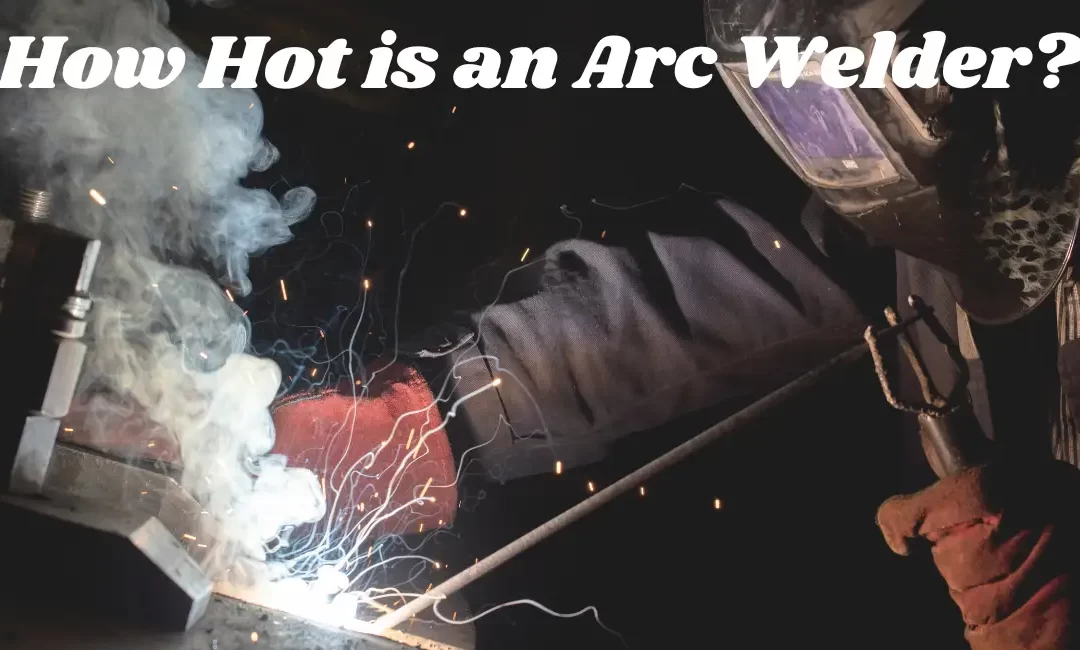The arc welding process is a type of fusion welding used for joining metals. During an electric arc, the metal between two workpieces melts at a temperature of around 6500°F, resulting in immense heat. Here in this article, we will discuss how hot is an arc welder and the temperature of arc welding.
Whether you are a new or experienced arc welder, there are many things you need to know about different types of welding processes and the hazards associated with hot work. This article will help you learn more about arc welding, the components of an arc welder and how to protect yourself while arc welding.
Table of Contents
Components of a Welding Arc
There are a few key components of a welding arc that everyone needs to know. They will help you create a clean and successful weld. First of all, you need to understand how the current flows. There are two main types: direct current and alternating current. Each has its own advantages and disadvantages. When working in confined spaces, direct current is the better choice.
Another important component is the electrode. The type of electrode you use will determine the temperature of the arc. For example, stainless steel electrodes will produce a cooler arc than carbon electrodes. This is because stainless steel has a higher melting point.
The electrode also helps you carry the current. Some of the types of electrodes include stick, bare and coated. Each type can be used in a vertical or horizontal position. Also, read the difference between a good weld and a bad weld.
Protect Yourself from the Welding Arc
Whether you are a seasoned welder or are new to the trade, it is important to know how to protect yourself from the welding arc. Welding arcs are highly hazardous and can result in long-term health problems.
The arc is created when an electrode contacts a workpiece. The arc produces radiation and heat which may result in burns and injuries. It is also responsible for creating toxic fumes.
To protect yourself from the welding arc, you need to wear the appropriate protective gear. Among other things, you should always wear a flame-proof helmet with a flame-proof skull cap. You should also wear welding gloves that are flame-resistant.
You should wear an apron or a welding jacket. It will protect you from welding sparks. This will help you shield yourself from hot pieces of slag, dust, and grind particles.
Different Types of Welding Processes
During welding, an electric current is used to create an arc between two metals. The heat created by the arc melts the filler metal, allowing the weld to form. The filler metal is often added to enhance the strength of the weld.
Welding is a complex process that requires technical knowledge and an appropriate skill set. Welders shape the strongest materials in the world. A wide variety of welding processes are available for use. But, there are certain differences between each process. Understanding the differences can help you choose the best technique for your welding needs.
Welding is not only an effective method of joining two pieces of metal but also produces ultraviolet radiation. Most welding processes require some level of shielding.
There are two main types of welding. The first is arc welding. This method uses minimal materials to produce strong welds. It is suitable for thin material but can be expensive. A second welding process, known as stick welding, is simpler and can be used for thicker materials.
Hazards Associated with Hot Work
Using an arc welder can cause a wide variety of hazards. These can include burning, ozone, toxic fumes, and electric shock. The first step in hot work safety is to establish a safe work area. This means ensuring that the area is adequately screened and that the equipment is in good working order. Also, the workers should be given proper instructions on the safe use of the tools.
Another hazard of arc welding is the eye. This is an injury to the cornea. This happens because of the heat generated from the arc. It can be painful and cause redness. Other parts of the eye can also be damaged. To protect the operator’s eyes, a screen should be used. This will help prevent the flying slag and chips from damaging the eyes.
Conclusion
During welding, a welder’s arc can reach temperatures of 10,000 degrees Fahrenheit. However, there are some things that welders can do to reduce the heat and protect their bodies.
The first thing to do is to wear fire-resistant coveralls. You can also use leather gauntlet gloves, fire-resistant leggings, and high-top leather shoes. You can also wear anti-flash goggles.
Welding arcs can be quite bright, so it is important to shield your eyes. You can also wear a leather welding apron to protect your body from hot pieces of slag. You can also use portable screens.
Make sure you clean the workpiece before you begin. You can use a wire brush to remove any coatings and films. Keeping the metal clean helps prevent any weld pool reaction.

James is a welding expert, accomplished author, and trusted guide with over 8 years of experience in the industry. With his in-depth knowledge and engaging writing style, James has become a true authority in the field, offering readers and clients invaluable expertise and insights to take their welding skills to new heights.

